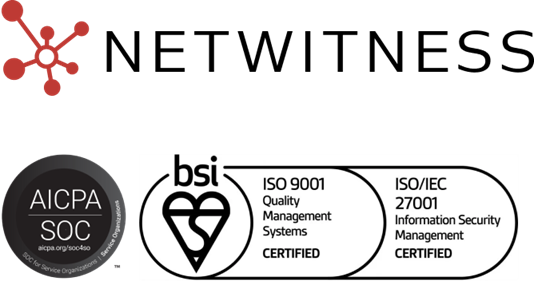What is Just-in-Time (JIT) Access?
Just-in-time access is a security methodology that grants users elevated permissions to systems and resources only when needed for specific tasks, automatically revoking those privileges once the work is completed or predetermined time limits expire. This approach eliminates standing privileges that create persistent security risks by implementing temporary, on-demand access provisioning aligned with the principle of least privilege. Understanding just in time access and implementing comprehensive just in time privileged access management enables organizations to significantly reduce attack surfaces while maintaining operational efficiency and meeting compliance requirements.
Just-in-time access involves provisioning temporary, task-specific permissions to users and systems on demand rather than maintaining persistent elevated access rights. Unlike traditional privileged access management that often relies on standing accounts with continuous administrative privileges, just in time privileged access dynamically grants and revokes permissions based on real-time need, business justification, and predefined time constraints.
Modern just-in-time access solutions integrate with identity access management systems to automate access request workflows, approval processes, and automatic deprovisioning. This just in time access control approach ensures users start with zero standing privileges and receive temporary elevation only when legitimate business needs require access to sensitive systems or data.
Synonyms
- On-demand Access
- Ephemeral Access
- Time-limited Access
- Privileged Access
Why Just-in-Time Access Matters
Failing to implement just in time privileged access management can result in excessive standing privileges, increased attack surfaces, credential theft opportunities, and successful privilege escalation attacks.
Key reasons just-in-time access is critical include:
- Attack Surface Reduction: Eliminating persistent privileged accounts that attackers can compromise and exploit for lateral movement and system compromise.
- Privilege Abuse Prevention: Minimizing opportunities for malicious insiders or compromised accounts to misuse elevated permissions over extended periods.
- Compliance Enhancement: Meeting regulatory requirements for least privilege access and maintaining detailed audit trails of privileged activities.
- Operational Security: Reducing the window of vulnerability during which elevated permissions exist and can be exploited by threat actors.
Effectively implementing just in time access control ensures organizations can enforce least privilege principles while supporting legitimate business operations and maintaining comprehensive visibility into privileged activities.
How Just-in-Time Access Works
Just in time privileged access management typically follows a structured workflow:
- Zero Standing Privileges: Users begin with no elevated permissions by default, requiring explicit requests for any privileged access needs.
- Access Request Submission: Users provide business justification and specify required permissions, target systems, and needed access duration.
- Automated Authorization: Requests are validated against pre-approval policies or routed to administrators for review based on risk levels and resource sensitivity.
- Temporary Elevation: Approved users receive time-bound privileged access with automatic provisioning of necessary permissions for specified tasks.
- Session Monitoring: Active privileged sessions are continuously monitored with full audit logging tracking who accessed what systems and performed which actions.
- Automatic Revocation: Permissions are immediately removed when users complete tasks, specified time limits expire, or security events trigger emergency access termination.
Types of Just-in-Time Access
- Broker and Remove: Creating policies requiring user justification for connecting to specific targets with centrally managed shared privileged accounts.
- Ephemeral Accounts: One-time-use accounts created on demand and immediately deprovisioned or deleted after task completion.
- Temporary Elevation: Allowing privilege escalation on request-based, timed basis for accessing privileged accounts or executing elevated commands.
- Just-in-Time Provisioning: Automatically creating and configuring access rights exactly when needed and removing them when no longer required.
Best Practices for Just-in-Time Access
- Start with Zero Trust: Implement zero standing privilege policies where all users default to minimal permissions requiring explicit justification for elevation.
- Automate Workflows: Reduce friction and manual overhead by automating routine access request approvals while maintaining security controls.
- Integrate with IAM: Leverage existing identity access management infrastructure to streamline just-in-time access provisioning and governance.
- Implement Comprehensive Auditing: Maintain detailed logs of all privileged activities including who accessed which systems, actions performed, and session durations.
- Enable Risk-Based Policies: Configure dynamic policies that consider user roles, resource sensitivity, access locations, and contextual factors when granting permissions.
Related Terms & Synonyms
- Just in Time Access Control: Security methodology providing temporary, on-demand access provisioning with automatic revocation after specified periods.
- Privileged Access Management: Broader security discipline encompassing tools and processes for securing, controlling, and monitoring elevated access rights.
- Identity Access Management: Comprehensive framework managing user identities, authentication, authorization, and access rights throughout their lifecycle.
- Just in Time Privileged Access: Specific application of JIT principles to high-privilege accounts and administrative functions requiring elevated permissions.
- Just-in-Time Access: Core concept of providing temporary need-based access to systems and resources with automatic time-bound revocation.
- Just in Time Privileged Access Management: Specialized PAM approach combining traditional privilege management with dynamic temporary access provisioning.
People Also Ask
1. What is just in time in security?
Just in time in security refers to the practice of granting users elevated privileges only when needed for specific tasks and automatically revoking those privileges once work is completed, eliminating persistent standing access that creates ongoing security risks.
2. What is the main purpose of JIT?
The main purpose of JIT is to enforce the principle of least privilege by minimizing the attack surface and reducing opportunities for privilege abuse, lateral movement, and unauthorized access to sensitive systems and data through temporary, task-specific access provisioning.




